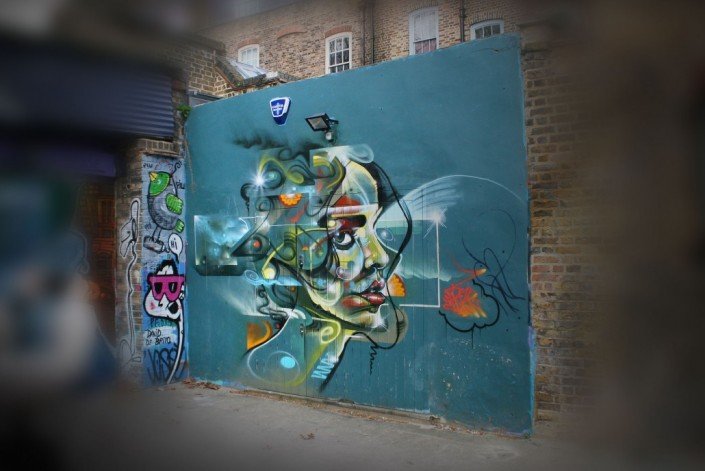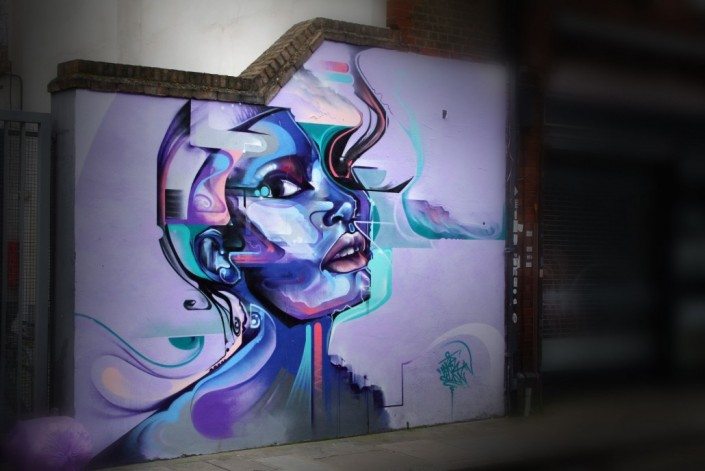Our core services
Partners
Sustainability Supply Chain School
Prompt Payment Code Approved
Industry experience
Our core services
Partners
Sustainability Supply Chain School
Prompt Payment Code Approved

Paul Stratford, Creative Director
I recently attended ‘Shoreditch Street Street Art Tours’ – ranked ‘Top 2 recommended things to do in London out of 670 activities’ by Trip Advisor. It was part of a familiarisation program I was conducting for a new client and provided a real immersion into this controversial art-form. The main rationale for signing up was research, I wanted to discover the differences between Art Galleries and Street Artists and how to judge good from bad.
I also had a secondary interest which stemmed from school days when I, 30 years ago used to be commissioned by other pupils to graffiti their school Satchels. Armed with gold and silver pens, I would charge around 50p to deface other students property…
“Most of us aren’t conditioned to see it”
I can’t answer that actually. An essential asset of street appeared to contain messages or statements. Artists seem to use it as a way of expressing important political beliefs through dramatic images. For example the tension between bombs and children in the same piece of art is extreme and sends a very powerful message. For other creators, it can be more subtle such as a small piece of type we saw a couple of centimetres high saying ‘99% of people will never notice this’. A stark reminder that it pays to look beneath what you initially see and study everything around you – it really can be interesting.
The day was neatly split into two types of street art really – non permission and permission-based.
Permission based street art






Moving through the streets I noticed that the highest quality work was isolated to certain areas. There are concentrated areas populated amongst very smart gentrified streets and I started to feel they lived side-by-side very well – each with clear identities and thats a good thing. Clearly I was being reconditioned to appreciate the art form.


Within the street artist community there exists great humility and respect. One artist ‘Citizen Kane’ had dedicated one spectacular 3D wall mural to his deceased son,, taking up to 12 days to complete – but he’d throughout the process he had preserved another artists work in one small corner of the wall – not because he had to, but because there is honour amongst the artists.
Perhaps most famously, we were shown a fantastic piece of letterform wall art on a huge scale by Hine. The story went that Hine was a former multiple offender who had appeared in court 8 or so times for his commitment to gratifying trains. It was at this point he began seeking permission-based commissions for shops and businesses. The locations of these art pieces became destinations for fans and the businesses themselves became landmarks. Eventually, his work became so famous a canvas of it was given as a gift to the Obamas and now hangs proudly in the Whitehouse. The only time a piece of art has hung there by a living person.
In the end, I concluded that without the Police and authorities treating street art seriously it would probably overrun our society. It would hit a critical tipping point where every street had the same extent of work and no identity. There would be no tiers of quality or respect for the best pieces of work.
“We’re experts in joining the dots between marketing, sales and the very best industry tools and methodologies to deliver ongoing marketing automation with consistent results.”
Schedule a discussion with Usable media
Home | About us | Services | Results | Contact us
© Copyright Usable Media 2018

Sustainability Supply Chain School

Prompt Payment Code Approved

Sustainability Supply Chain School

Prompt Payment Code Approved


 Optimise Your Email: 5 Ultra Simple Steps To Turbocharge Your Messages in 2...
Optimise Your Email: 5 Ultra Simple Steps To Turbocharge Your Messages in 2... 